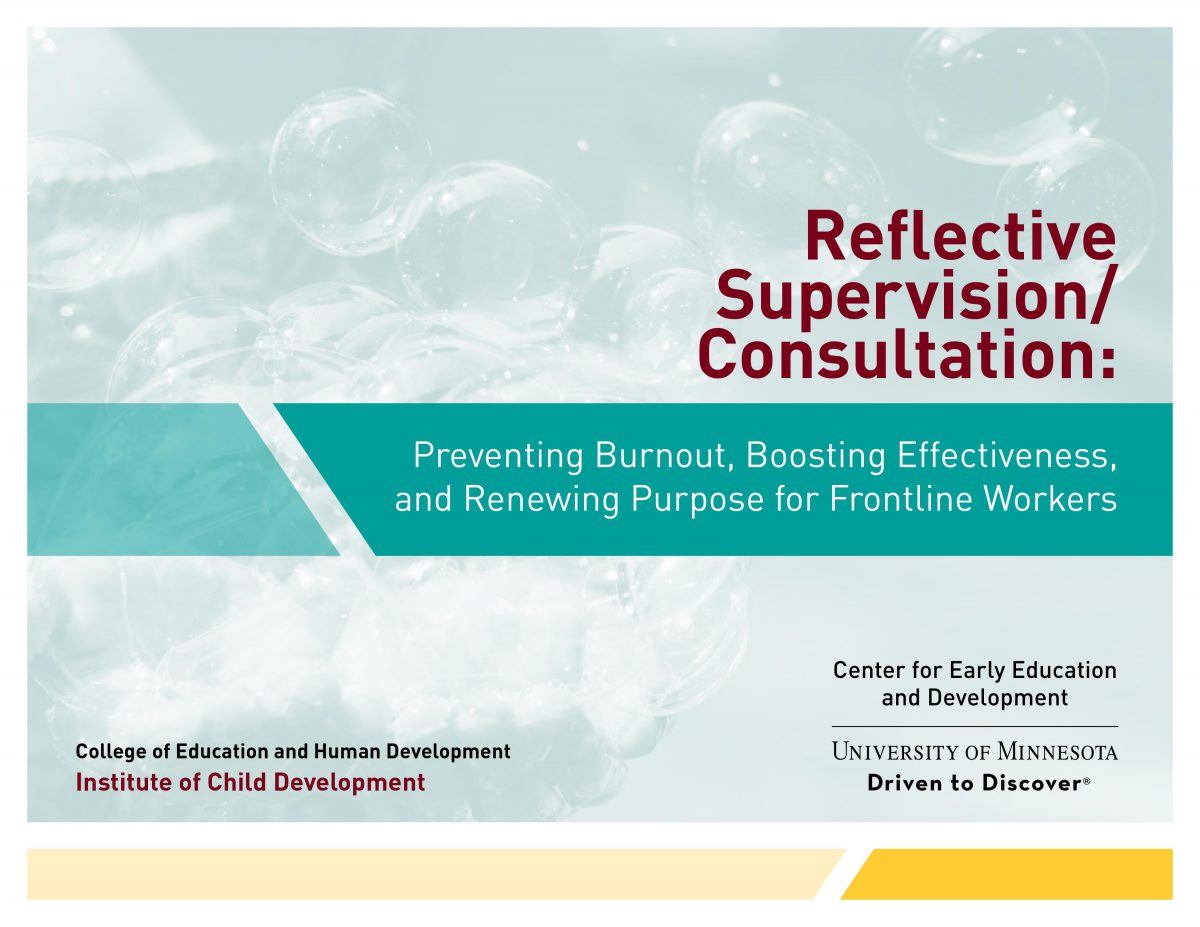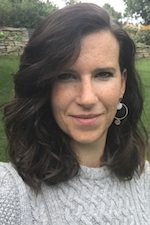The Reflective Interaction Observation Scale (RIOS) was developed at CEED as a research tool, but reflective practitioners quickly found creative ways to use it in reflective sessions. Learn more in our Q & A with Michelle Dineen, MSW, LICSW, IMH-E®.
Michelle Dineen, MSW, LICSW, IMH-E®, is a therapist and reflective consultant. In part one of our Q & A, she talked about what happens in a reflective supervision session and why it benefits participants. In this second installment, Dineen talks about how reflective supervisors and consultants use the Reflective Interaction Observation Scale (RIOS™), which was developed at CEED. Dineen teaches our online course, RIOS™ 1: Using the RIOS™ Framework for Reflective Supervision, and she authored the self-study module Wondering with Purpose: Reflection in Any Setting.
The RIOS was initially developed as a research tool, but reflective practitioners quickly started using it as a tool for training and practice. Can you talk about how the RIOS is used in reflective supervision sessions?
Michelle Dineen: I’ll give you my personal answer. Have you ever seen that image of pinning down a cloud? Describing reflective supervision can feel like that. What researchers at CEED did when they developed the RIOS was to answer the question: “What are we actually doing in reflective supervision?” What they found is that we’re actively listening and being curious. The RIOS framework helps the reflective supervisor or consultant to remain grounded while listening to a story. I think of the RIOS as a touchstone, something to think about when you’re getting lost, when you might have veered off. It’s a reminder to ask yourself: What am I curious about next? What am I not curious about?
So the RIOS was developed as a way to describe the content of a reflective supervision session. But practitioners can actively use it during reflective supervision to help guide the conversation.
Here is one way to think of reflective supervision. Picture six people sitting around a table with a 3D object in the middle of it. None of us can see the object from every angle. Each of us is seeing a different part of the thing. But if we all look at it at the same time and from our different perspectives, we are seeing the whole object.
One of the Essential Elements of reflective supervision identified by the RIOS is Holding the Baby or Child in Mind. What the RIOS does is to help us hold all of the pieces: the person who’s receiving services, the baby or child, and the provider who’s telling the story. It helps us build a whole picture of a family or a situation. It helps us know if we are seeing all the different parts of the 3D object. This is especially important since a reflective supervision session consists of two or more people talking about a third party.
This sounds like one of the differences between reflective supervision and therapy. When someone meets with a therapist, their own stories are the focus of the conversation. In contrast to that, in reflective supervision, the provider and the reflective supervisor are talking about someone who is not in the room with them.
Yes, when a client shares a personal story with their therapist, the therapist is curious about the person and their story. But the client has the answers. In a reflective session, the people in the room don’t have all the answers. We are still curious about the provider sitting with us who is sharing the story. As we know, they are part of the story. They’re helping that third party, and part of their work is to be curious about that third party.
It’s interesting that you use the word “curiosity” more than words like “empathy” or “compassion.”
When you’re curious, open, or challenging assumptions, it helps you to connect empathetically. The curious mindset leaves more space for understanding the other person–or just sitting with that person and not understanding. Research has found that a curious, wondering mind is a coping mechanism for stressful events. If a stressful thing happens, instead of holding onto the stress, the curious mind can actually say, “Okay, this is an adventure. I’m interested. What do I need to know?” We move towards action, curiosity, and wonder. That curiosity goes away sometimes when things are stressful or when someone hurts my feelings. Yet my job is still to be in a relationship with the other person, to get them what they need.
Let’s say I’m a home visitor working with a parent. The parent is yelling at me. If I’m able to maintain my curiosity about the person, I may ask, “What is the feeling that produced this behavior?” I may learn that they were verbally abused as a child. That starts to kick my empathy into gear. Now I understand that they’re playing out their attachment relationship with me, and if I act differently from their parent, then there’s potential for repairing that prior relationship. Later, when the parent interacts with their child, they may be able to use our relationship as a model sometimes, instead of only the relationship they had with their parents.
That’s an example of Parallel Process, one of the Essential Elements identified in the RIOS.
It’s one of the reasons why reflective supervision was born in the infant mental health field. Workers were trying to create these corrective relationships with clients who were becoming parents. But what if corrective relationships like that were available to everyone? If there are people who are curious and interested in me and in whatever I’m having trouble with, I can hold my feelings instead of acting them out.
This is why I believe this course, RIOS™ 1: Using the RIOS™ Framework for Reflective Supervision, can work for people in a range of professions. I think the same is true of the module Wondering with Purpose: Reflection in Any Setting. Take “Holding the Baby in Mind” and change “baby” to “person on the phone who needs housing” and “provider” to “person answering the phone.” The reflective provider will be more able to hold the boundary when someone is acting inappropriately. The provider will then be more able to give them another chance when they’re acting appropriately, rather than saying, “You can’t come back to my agency again.”
So that’s what opens up this course to anybody who’s interested in this reflective way of interacting with people. A big piece is practicing identifying a feeling in someone else and in yourself. Have you heard what Brené Brown has to say about empathy versus sympathy? Empathy acknowledges that maybe there are no solutions. Empathy means that when someone feels like they’re down in a hole, you just get down in the hole with them. It helps us get used to saying to a supervisor, “I am tapped out, frustrated, and angry.” And it helps the supervisor get used to saying: “Wow, I hear you.” Or: “I trust you to do what you need to do so you can get back to work.” That’s instead of saying: “Just get back to the phones.” Or: “Let me fix it.” There doesn’t need to be a genius fix, there just needs to be a space.




